Azaleas plant care and growing guide: how to grow these star shrubs
Azaleas are among the best garden shrubs available. And with the right care you will be rewarded with dazzling flowers throughout spring


Azaleas are neat, long lived, lime-hating, mostly cold-tolerant shrubs with brightly colored spring flowers. They are among the most valuable garden shrubs as they rarely outgrow their space and reliably produce dazzling color each spring. They can be evergreen, retaining leaves all the year round, or deciduous in which case their leaves fall as winter approaches.
Their flared, funnel-shaped flowers come in every shade, except blue, including vivid red, orange and yellow tones as well as white and softer pastel pink and lilac shades. A few are bicolored, striped or flecked. Most azaleas have simple trumpet-shaped flowers 2-3in (5-7.5cm) across, although some flowers can be up to 5in (12.5cm) across. Some even have extra petals creating double flowers and a delicious scent is a feature of some varieties.
The flowers are often carried singly at the leaf joints but can also appear in clusters and show themselves off very effectively. Re-blooming varieties are also now available.
In small yards they are ideal as foundation plantings or ground cover as part of your flower bed ideas. Or they can even be grown as specimens in containers.
How to choose azaleas for your plot
Azaleas come in a wide range of types, although figuring out the differences can be tricky. Online sources often provide filters that allow you easily to choose azaleas of particular types and with combinations of features.
Deciduous azaleas
Most azaleas are deciduous spring-flowering plants, losing their leaves in the fall, although some may retain a few leaves depending on the climate. Often, the foliage turns glorious shades of burgundy, scarlet, fiery orange, gold and yellow before dropping off. This brings us a second season of interest after the spring flowers and will add autumn color to your garden.
Deciduous varieties tend to have larger leaves and are more cold tolerant (USDA zone 5). They also tend to prefer sunny sites. Look for the Gable Hybrids, the Ghent Hybrids, and the Knap Hill hybrids.
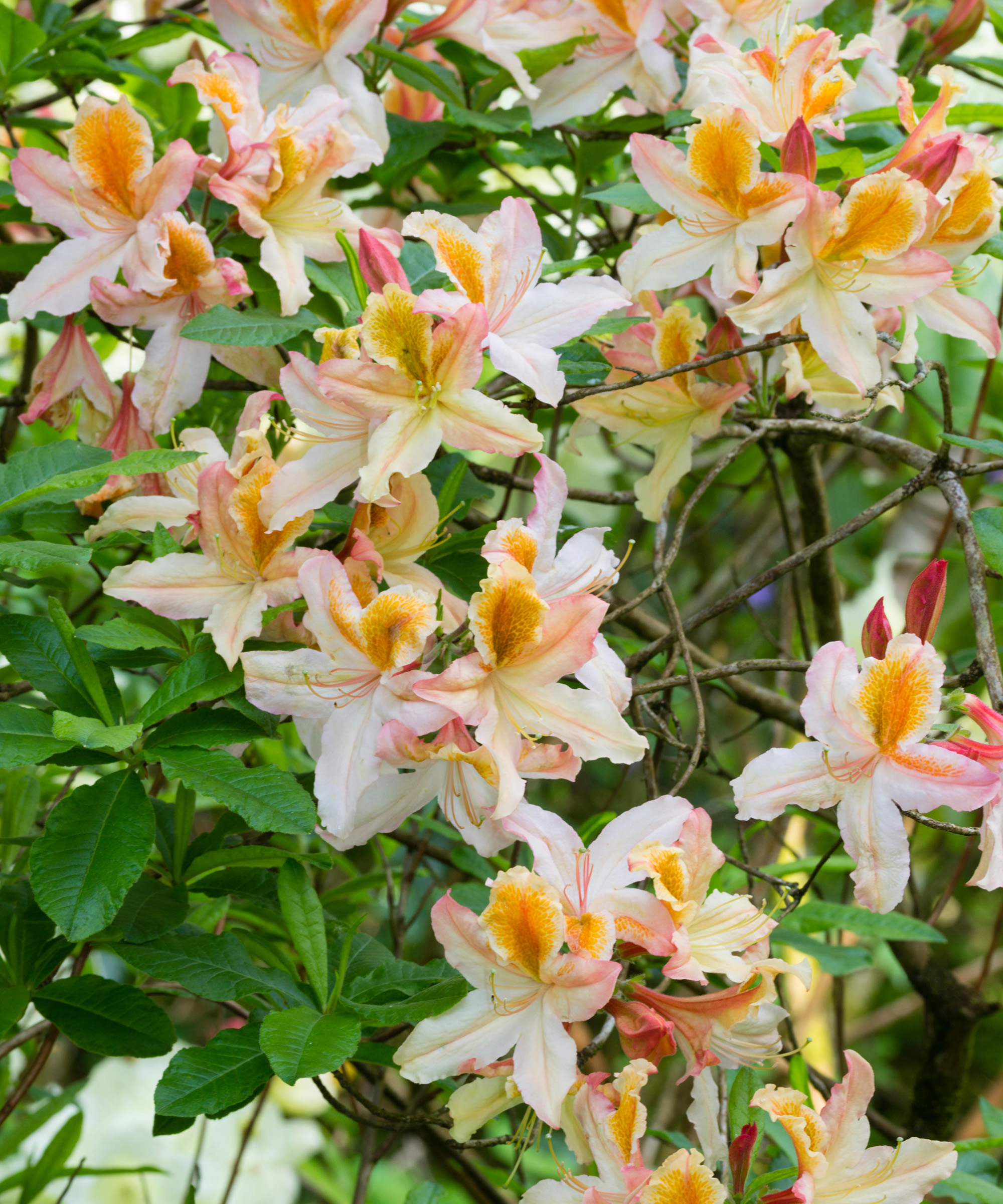
Evergreen azaleas
Some azaleas have evergreen leaves, so that in winter the plants still have a presence in the garden. However, the plants are less cold tolerant than deciduous types (USDA zone 7) and there is no fall foliage color.
Plants have smaller leaves, need warmer winters and prefer shade – and they never have yellow flowers. Look for the Glen Dale Hybrids, the Kaempferi (aka Exbury) Hybrids and Kurume Hybrids, Encore azaleas and the tender Indicum Hybrids (USDA zone 8).
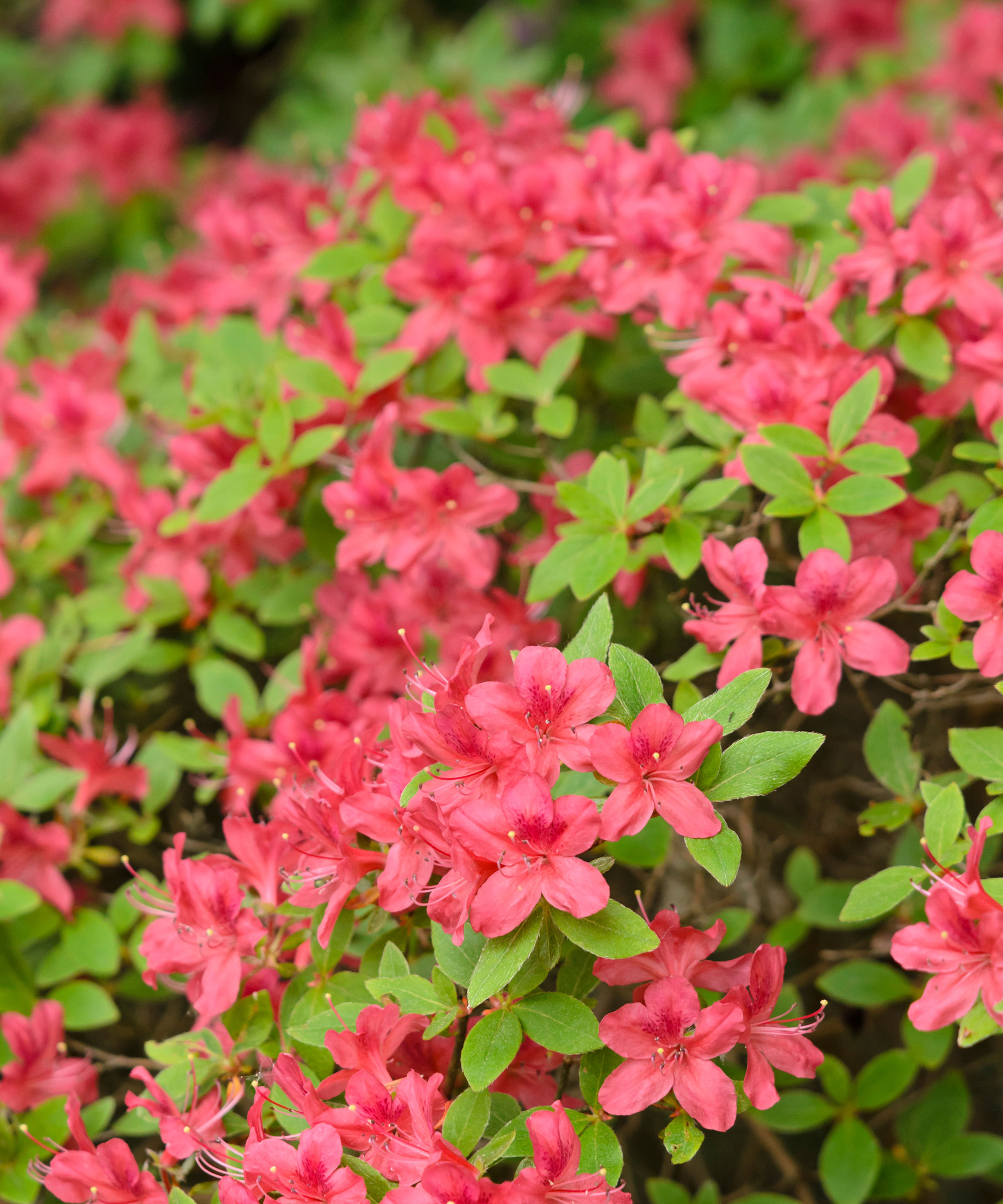
When and where to plant azaleas
Azaleas are best planted in late spring or early fall. They can also be planted in winter in USDA zone 8, but should never be planted when the ground is waterlogged or frozen.
Some types of azalea are happy in sun, others in partial shade. All azaleas, however, need an acidic, lime free soil. If rhododendrons and azaleas are already growing in your yard, then you can be confident that your new azaleas will do well too.
If you are uncertain about your soil type, test its acidity with a soil pH test kit from Amazon, also available from the lawn and garden area of DIY stores and from nurseries. Soil acidity is measured on the pH scale, your kit will tell you the level of your soil. Azaleas are best in a pH of 4.5-6.0. If your soil pH is higher that 6.0, choose a different shrub.
Azaleas also prefer soil with high organic matter, add plenty of composted bark or other soil amendment if necessary.
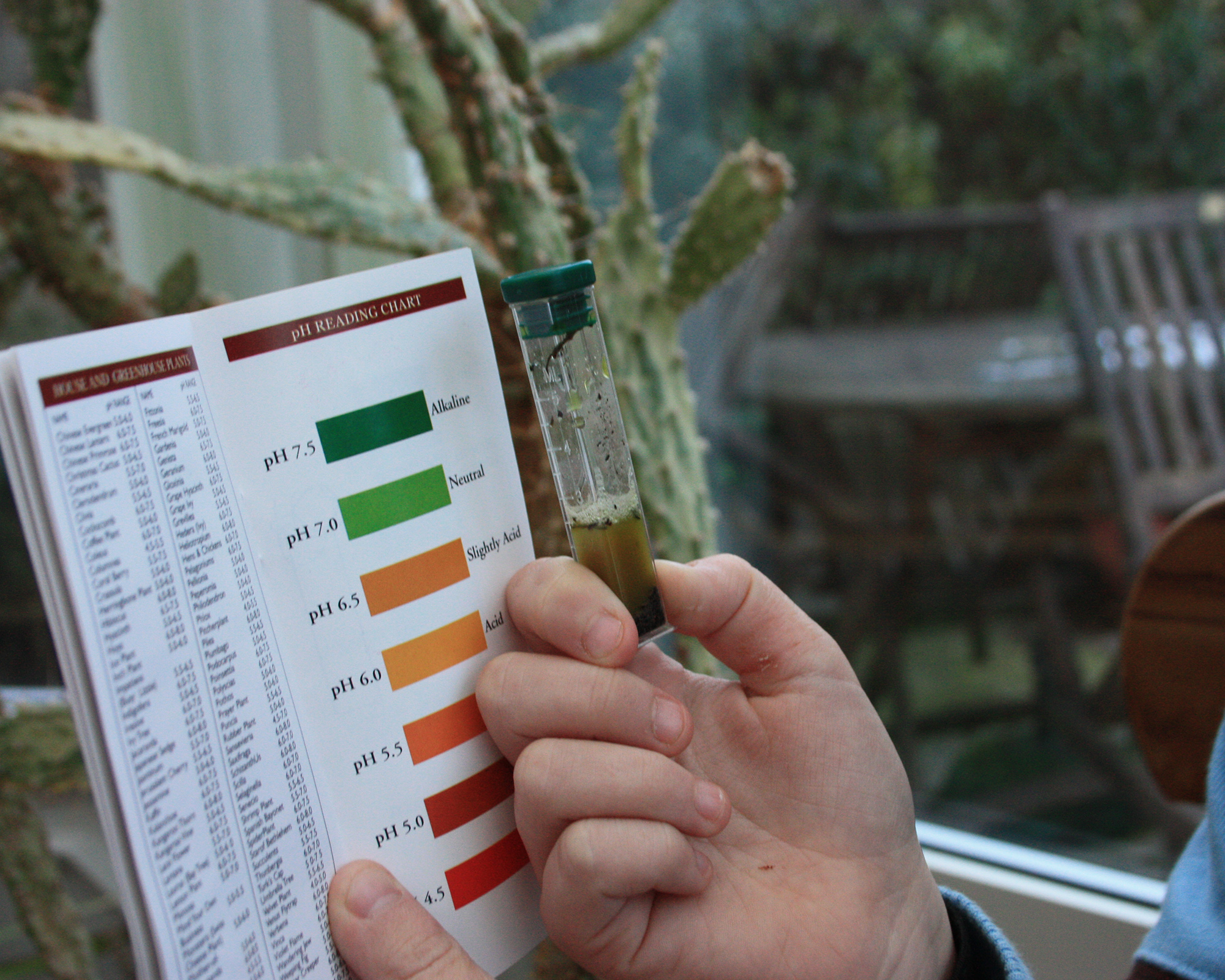
How to plant azaleas
The day before you plant them, it's worth fertilizing plants with liquid azalea, camellia, and rhododendron plant food.
Azaleas have shallow, spreading root systems, so dig a planting hole just a little deeper than the plant’s root ball but twice as wide. Most soils need amendment with compost, pine bark or other organic material – but not peat moss which is a scarce natural resource.
The soil improver can be worked into the soil and the plant set so that the top of the root ball is just a little below the surrounding soil level. Refill the hole, firm well, water generously with more liquid feed then mulch with pine bark to help retain moisture and suppress weeds over the long term.
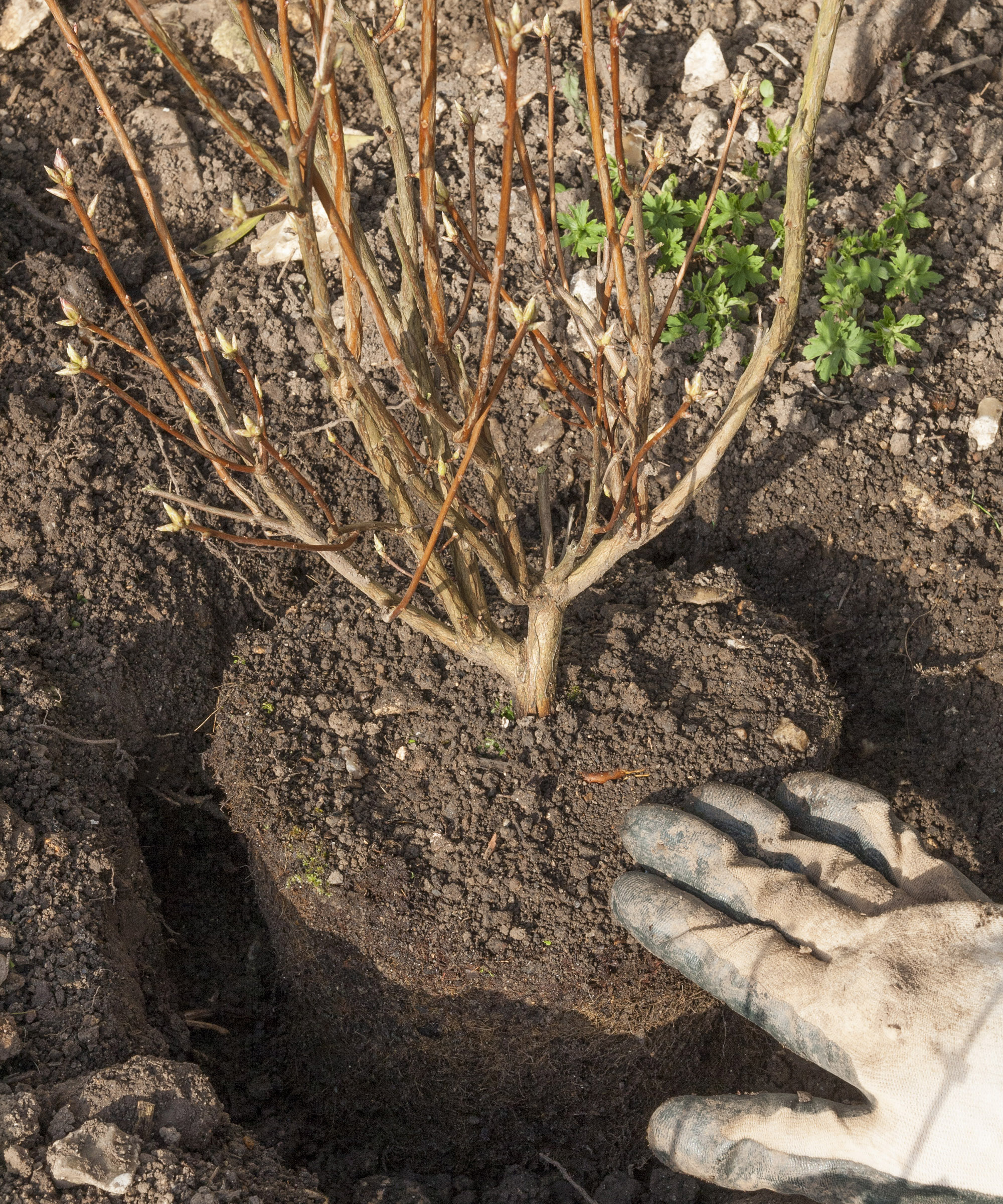
How to grow azaleas in a sunny site
Some azaleas thrive in sunny sites, some are better in shade, but generally speaking deciduous varieties are more tolerant of sun. However, they are not drought tolerant plants or lovers of scorching conditions. So azaleas in sunny situations must not be allowed to dry out.
An annual fall mulching of pine bark helps the soil retain moisture in sunny situations, but the best advice is to choose varieties carefully.
Look for the Gable Hybrids, the Ghent Hybrids, and the Knap Hill hybrids or choose the 'sun' filter on nursery websites. The re-blooming Encore and Bloom 'N Again azaleas are also surprisingly sun tolerant.
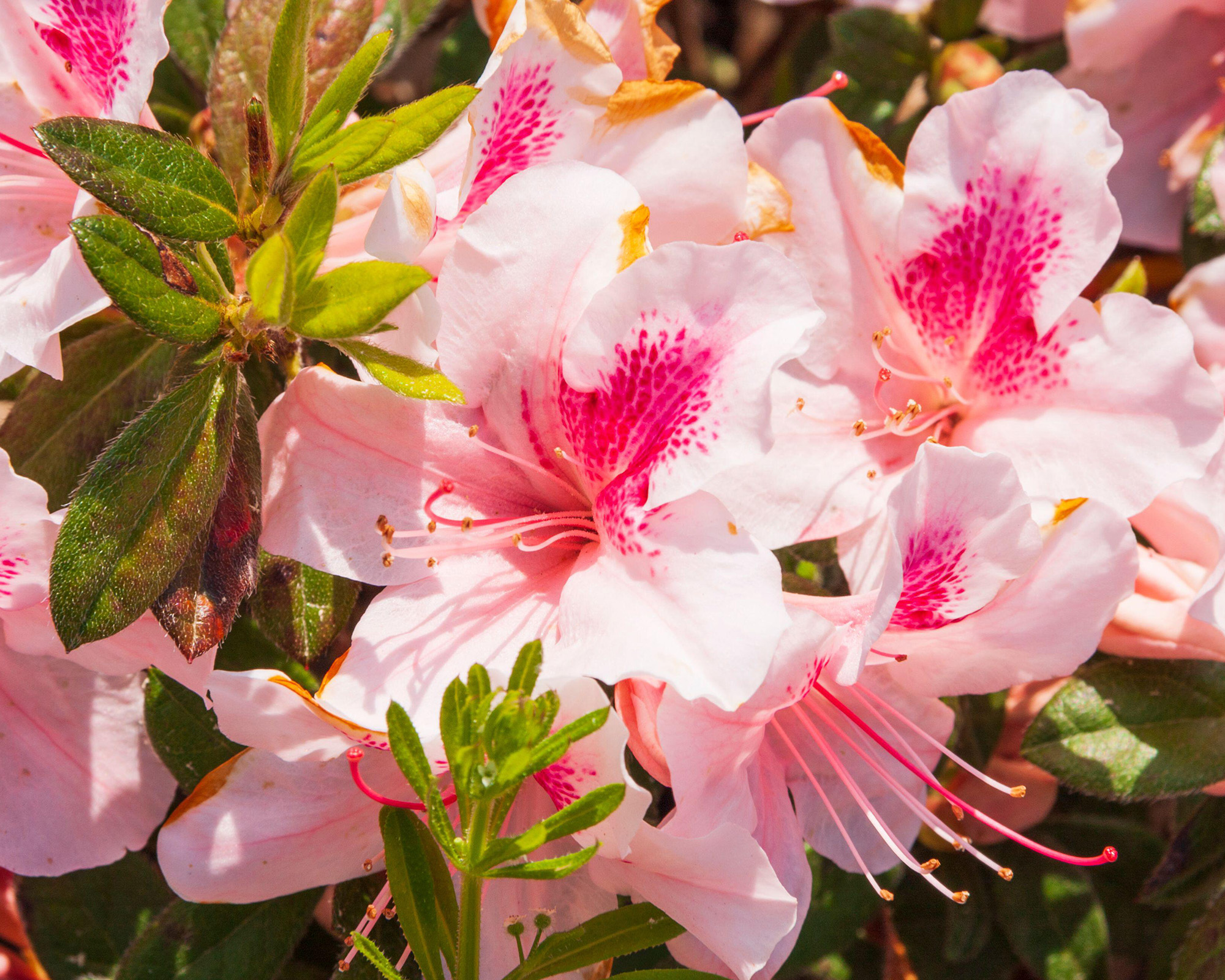
How to grow azaleas in shade
Evergreen azaleas not only enjoy the shade, many need the shade as the foliage and flowers may scorch in full sun, especially in dry conditions. If the roots dry out in summer, the plants are less likely to survive the following winter and it may be wrongly assumed that they have been killed by cold.
However, even though they are shade loving plants, all-year constant shade is not suitable – partial shade or dappled shade is ideal. Although evergreen azaleas have very little, or no, fall foliage color, their dark evergreen foliage means that they are ideal for foundation planting.
The Kurume Hybrids are probably the best azaleas in shade, look out too for the Glen Dale Hybrids, the Kaempferi (aka Exbury) Hybrids and the Encore azaleas. Or choose the 'shade' filter on nursery websites.
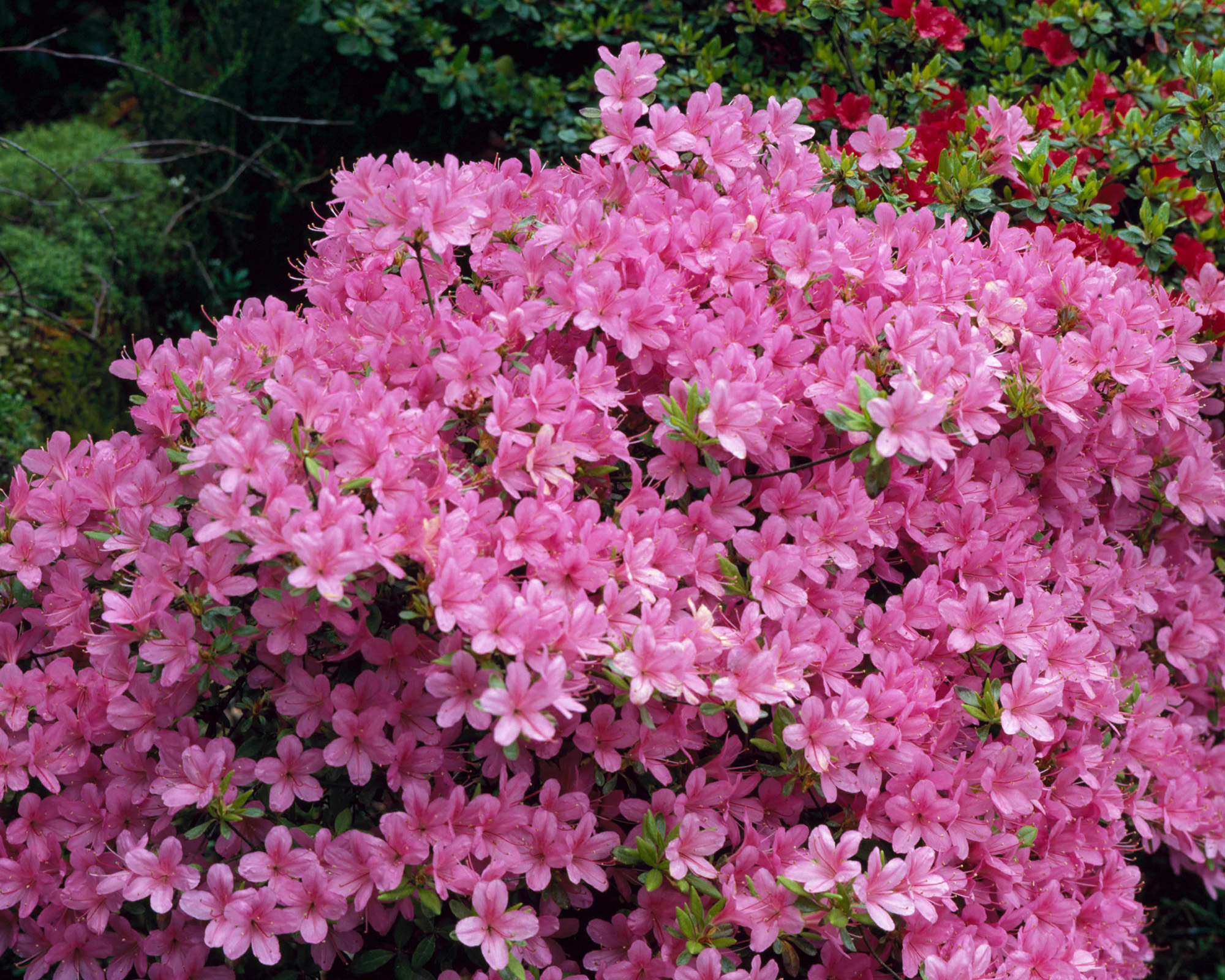
How to care for azaleas
Azaleas are among the best low maintenance shrubs. They rarely need pruning or trimming, although if growth becomes unbalanced they can be tidied up after flowering in late spring or early summer. It is also suggested that re-blooming azalea varieties are trimmed lightly after their spring bloom, to encourage new growth for flowering later.
Watering in dry conditions is often helpful and it is wise to give an annual dose of a specific granular azalea, camellia, and rhododendron plant food to help keep your azaleas growing and flowering well. Doing this in the evening during summer is a good garden water saving tip.
An annual mulch of pine bark in the fall will help suppress weeds, retain moisture in the soil and keep it acid.
Azaleas which are grown in pots as part of your container gardening ideas, will need regular irrigation and, if growth is poor, regular doses of liquid azalea, camellia, and rhododendron plant food.
A number of pests and diseases can attack azaleas, the best defence is to ensure that they are planted in the right place and are growing well. Healthy, happy azaleas suffer far fewer problems than sickly ones.
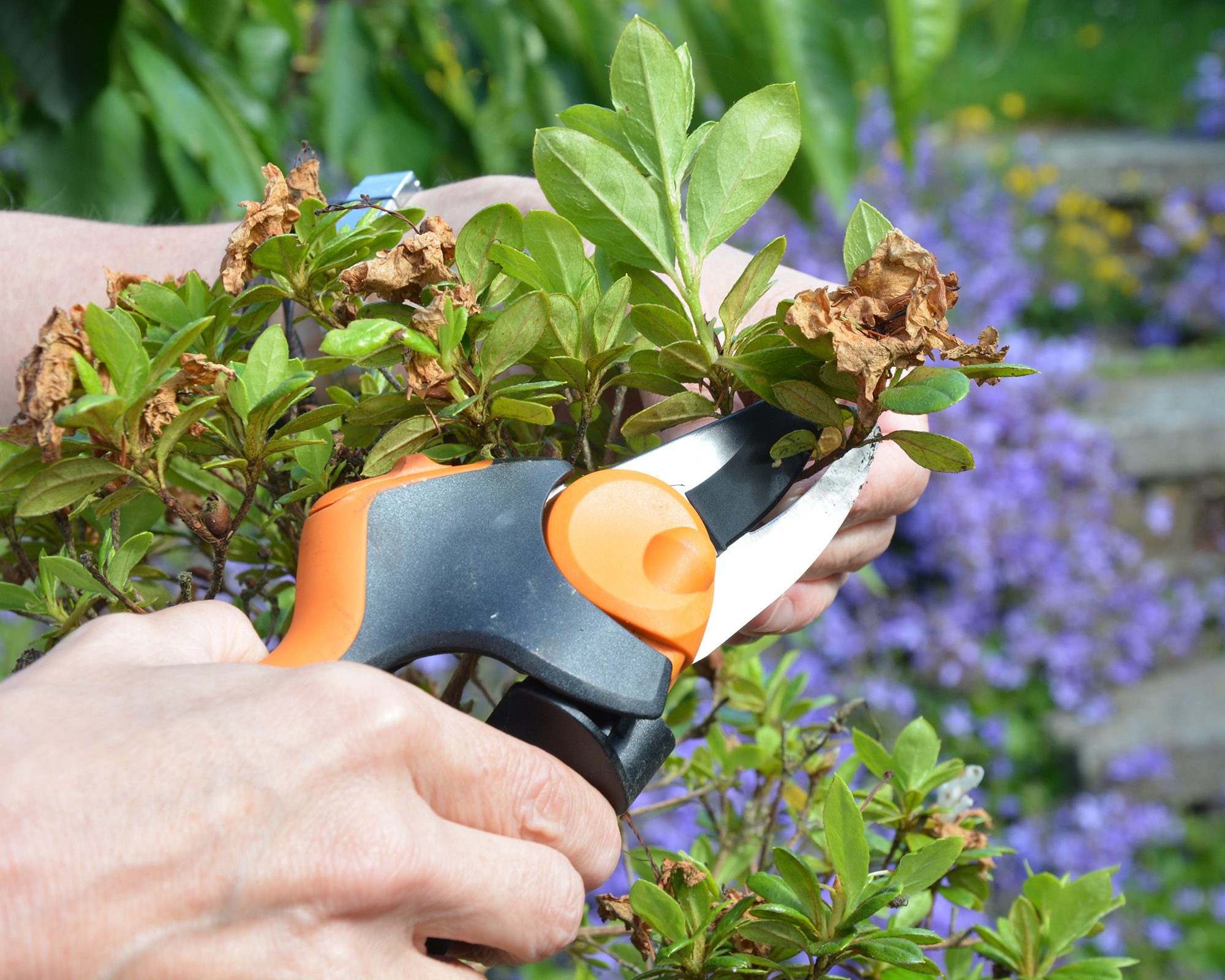
What’s the difference between an azalea and a rhododendron?
All azaleas are rhododendrons, but only some rhododendrons are azaleas. Let me explain. Scientifically speaking, azaleas are just one of the many groups of plants classified as Rhododendron.
They were once considered so different from other rhododendrons that they deserved classification separately but no longer. There are certain botanical details that mark them out as different from other rhododendrons but not so very different as to be treated separately.
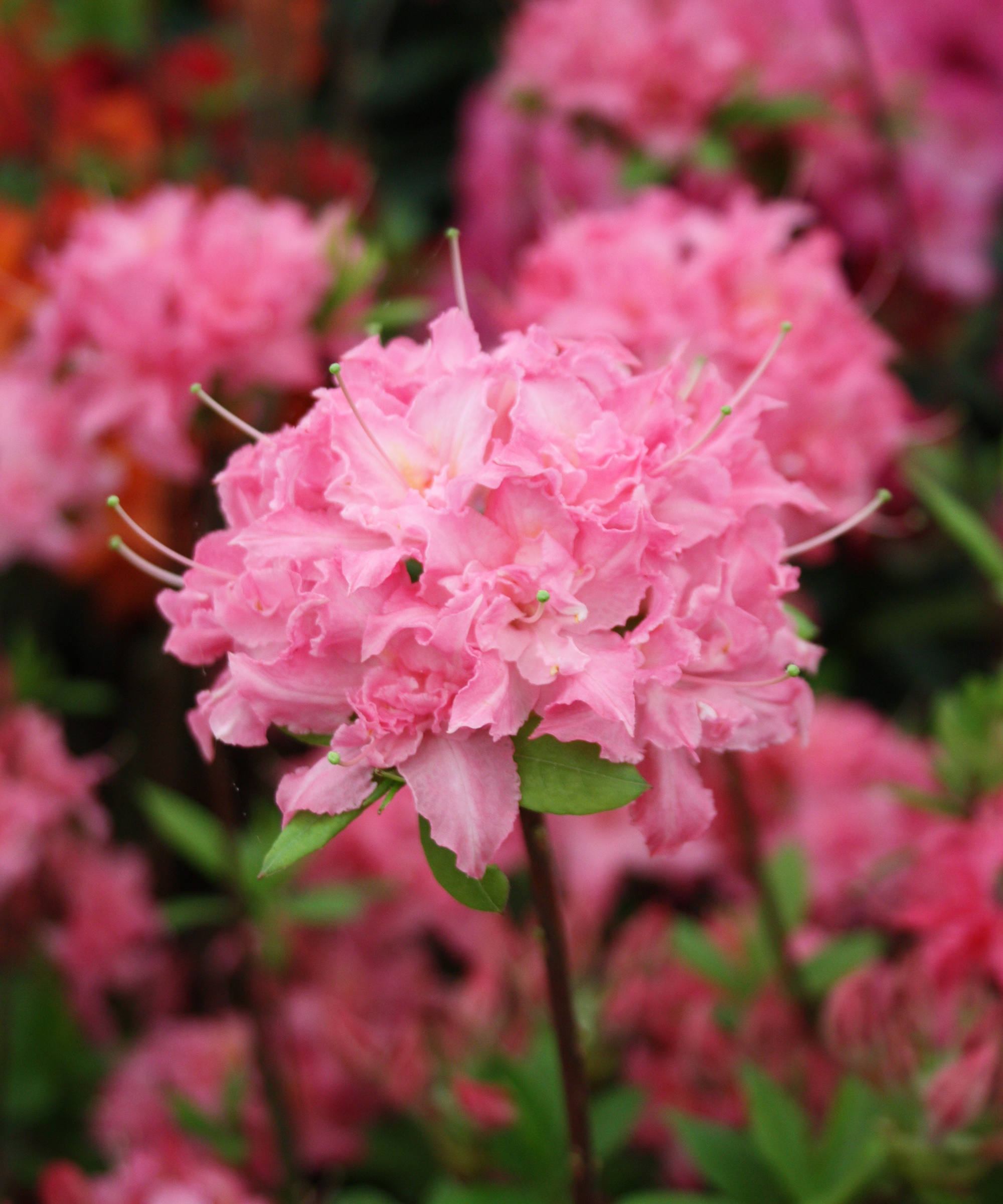
Are there azaleas that flower at two different seasons?
Yes, there are now four groups azaleas that not only flower in the spring, but also flower again later in the season, adding extra interest to your garden borders throughout the year. They are also more cold hardy (USDA zone 6) and also more heat tolerant (USDA zone 9) than many azaleas.
The best known are the Encore Azaleas that flower in spring, summer and fall. There are now more than 30 varieties and they come in a wide range of vivid and pastel colors. They are either dwarf 3x3ft (90x90cm), or intermediate, 4x4ft (1.2x1.2m) in size.
There are also the Bloom-a-Thon azaleas (five varieties), the ReBloom azaleas (six varieties), the Bloom 'N Again azaleas (nine varieties), which are more cold hardy than most (USDA zone 6), and the Perfecto Mundo (six varieties) azaleas which are especially good in spring but also flower later.
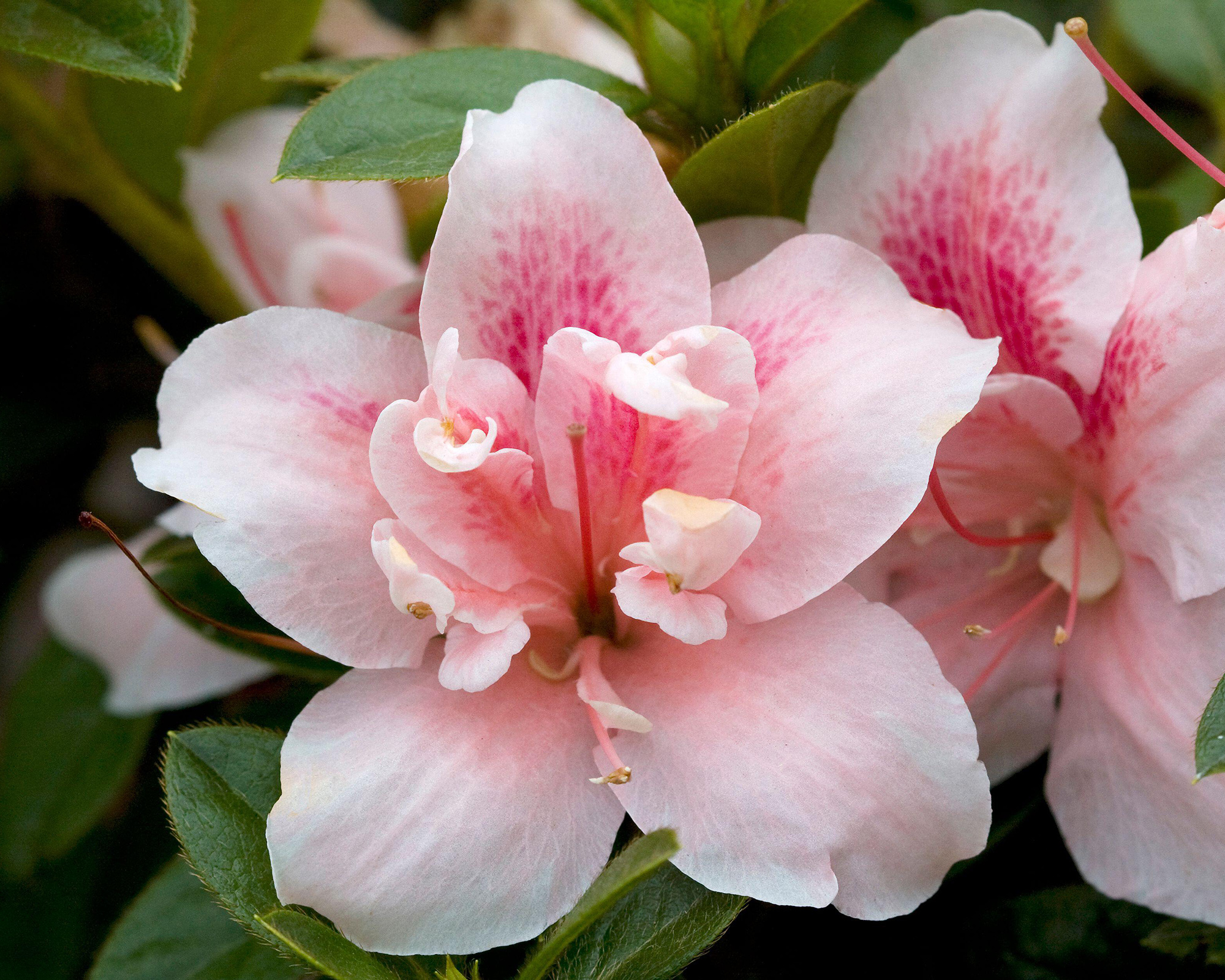
Why aren't my azaleas blooming?
- Sun and shade: Most azaleas prefer four to six hours of sunshine each day to encourage blooming. However, too much sun will dry them out quickly or scorch the leaves, too much shade will encourage spindly growth and sparse flowering. Different types also have their own preferences so check the tag carefully.
- Watering: Azaleas dislike drought and also hate waterlogged soil so try to create a balance and ensure that the soil is consistently damp. If you have more than one or two azaleas, consider installing a drip irrigation system.
- Trimming: Pruning shrubs at the wrong time can prevent flowering. It can be tempting to prune in spring or fall but this usually results in flower buds being cut off. If you decide to prune, do so as the spring flowers are fading.
- Fertilizer: One application of a specific granular azalea, camellia and rhododendron feed in spring is usually all that azaleas need. Plants that are looking sickly or growing slowly, especially those in containers, may benefit from two or three doses of a specific liquid feed.
- Weather: Spring frosts can kill new shoots and flower buds. Your azaleas may take time to recover and there will be no flowers. Protect plants from frost at this delicate stage, cover your plants with a frost blanket – or even old bedsheets.
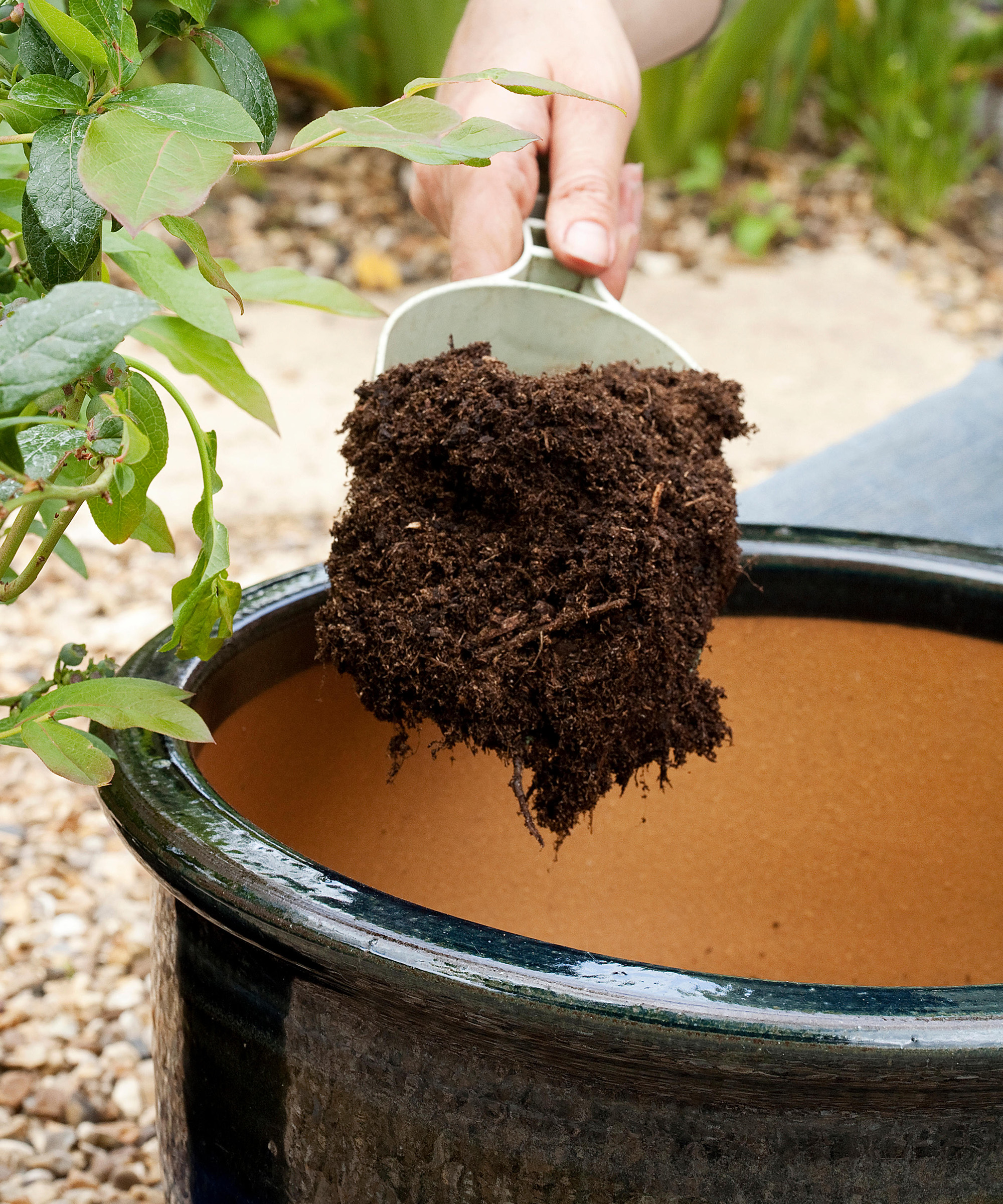
Are azaleas deer resistant?
No, we must be honest: if you have deer in your yard they will eat your azaleas. If there are deer in your neighborhood, and you cannot fence your yard to keep them out, try one of the deer deterrents but if the deer are hungry they will even eat your treated azaleas. If it continues to be a problem, you may have better luck growing a selection of deer-resistant plants in your yard instead.
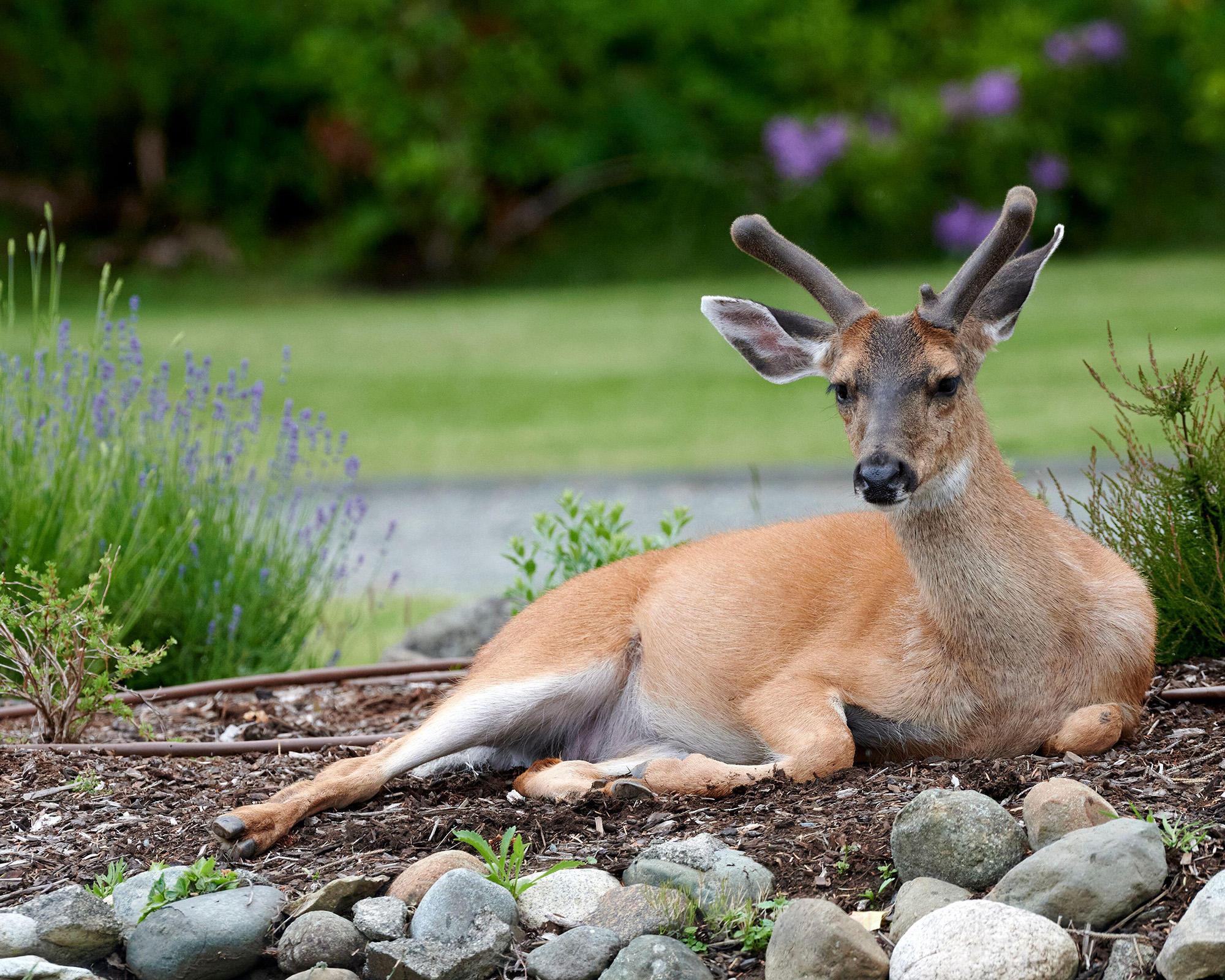
What flower is the Masters known for?
Those dazzling flowers we see at Masters golf tournament in Augusta, GA are azaleas. The golf course was constructed on the site of an azalea nursery and there are 1,600 azalea plants around the thirteenth hole alone.
The best azaleas for the south of the US are the Indicum azaleas, the Kurume azaleas, the Satsuki Hybrids, and the Glenn Dale Hybrids. All are evergreen. In most areas they are at their best sheltered from the sun through the heat of the day and kept moist at the roots.

Are there any native azaleas?
Yes, there are 15 different wild azaleas that grow in the North America, in fact North America has far more wild azalea species than anywhere else in the world. They can be found growing wild from the Florida peninsula to Alberta, they are all deciduous and some have a lovely fragrance.
One of the most widely distributed across the country, is the swamp azalea, Rhododendron viscosum, with heavily scented white flowers. It grows in the south and east, from Texas to Maine.
If you would like to grow a native azalea, check which species grow naturally in your area, your local nursery or Cooperative Extension Service should be able to advise.
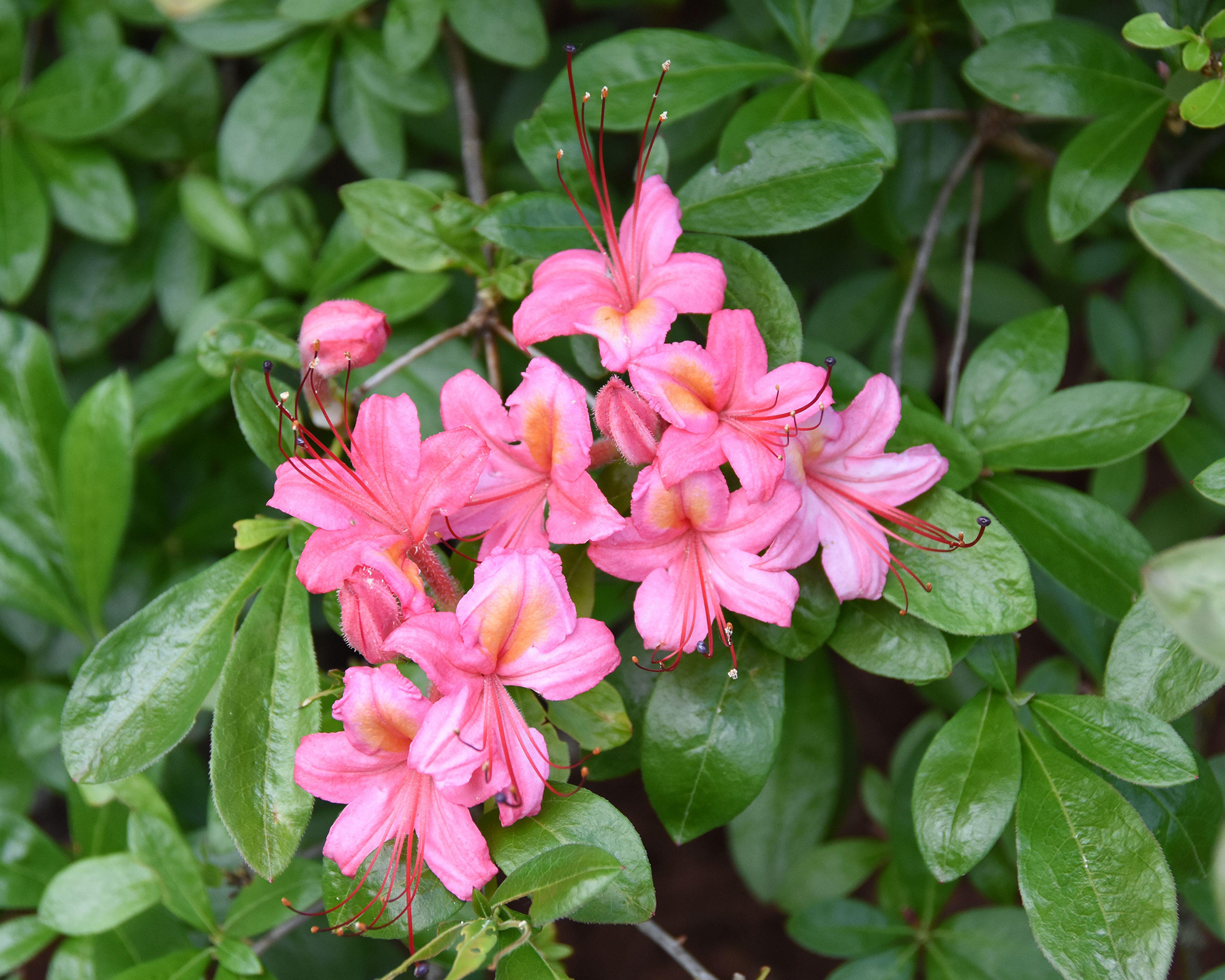
How to buy azaleas
Azaleas are sold in retail nurseries, the garden centers of big box and DIY stores, even at discount stores and also by mail order. Mail order nurseries offer the widest selection of types and colors.
Plants are often sold in gallon containers, in larger – sometimes much larger – containers and also balled and burlapped (sometimes referred to as b-and-b). These are plants that dug from the nursery with the dirt on their roots and wrapped in burlap secured with twine, or even wire, for transport.
Shipping costs for plants in larger sizes can be high, although free shipping deals are sometimes on offer as well as offers of mixed packs of gallon-sized plants. Some mail order nurseries supply azaleas in tubes.
Start by hunting out nurseries in your area that specialize in azaleas, this will allow you to choose from a wide range of variety at an economical cost. If the choice is poor, check out mail order suppliers.
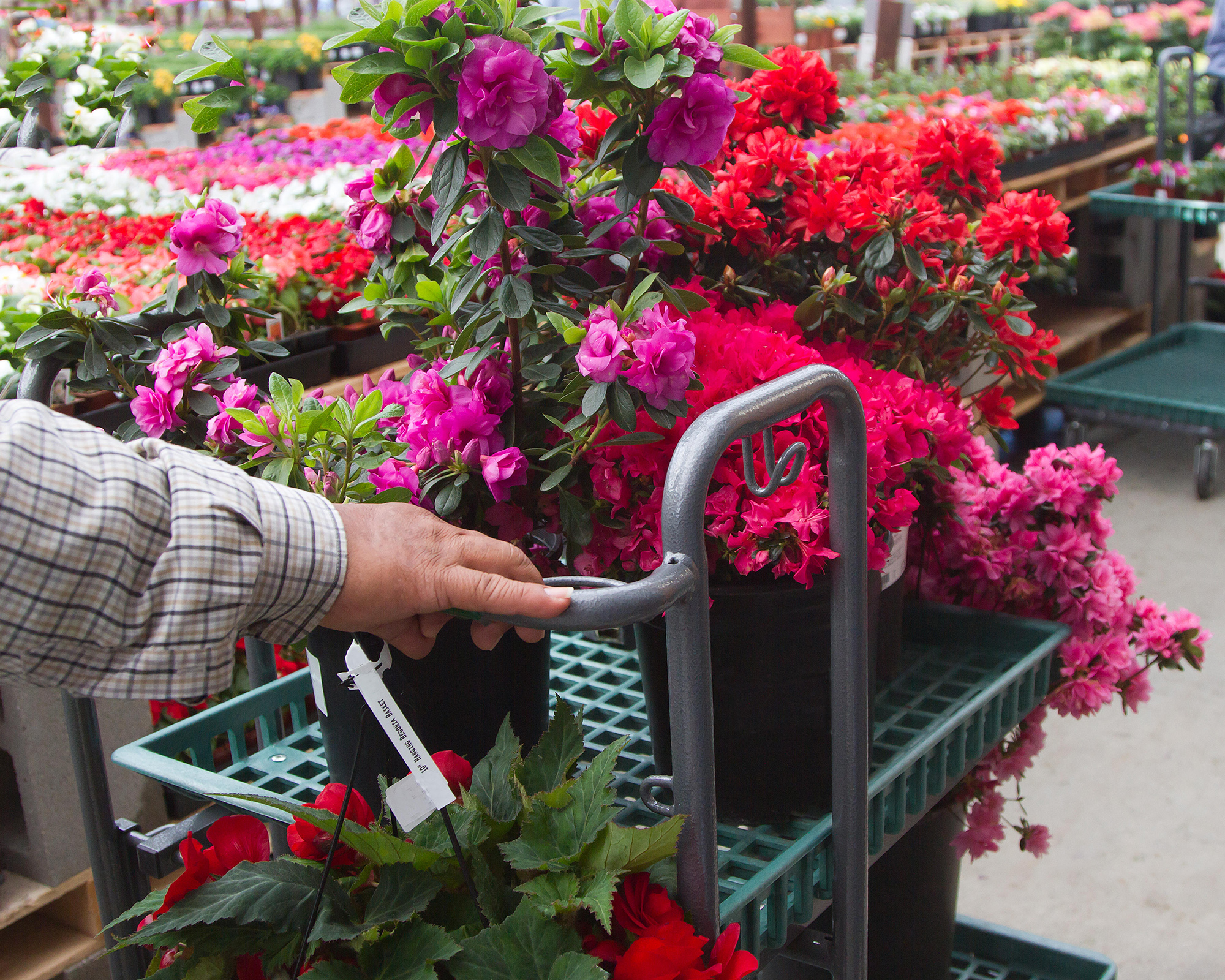
Where to buy azaleas
You've read all there is to know about how to grow azaleas. Now it's time to find a gorgeous blooming variety for your own garden.
Where to buy azaleas in the US
- Shop azaleas at Amazon
- Shop azaleas at Burpee
- Shop azaleas at Walmart
- Shop azaleas at Brent And Becky's
- Shop azaleas at Encore Azaleas
- Shop azaleas at Monrovia
- Shop azaleas at Wilson Bros Gardens
Where to buy azaleas in the UK

Graham Rice is a garden writer who has won awards for his work online, and in books and magazines, on both sides of the Atlantic. He is a member of a number of Royal Horticultural Society committees and the recipient of the 2021 Garden Media Guild Lifetime Achievement Award.
